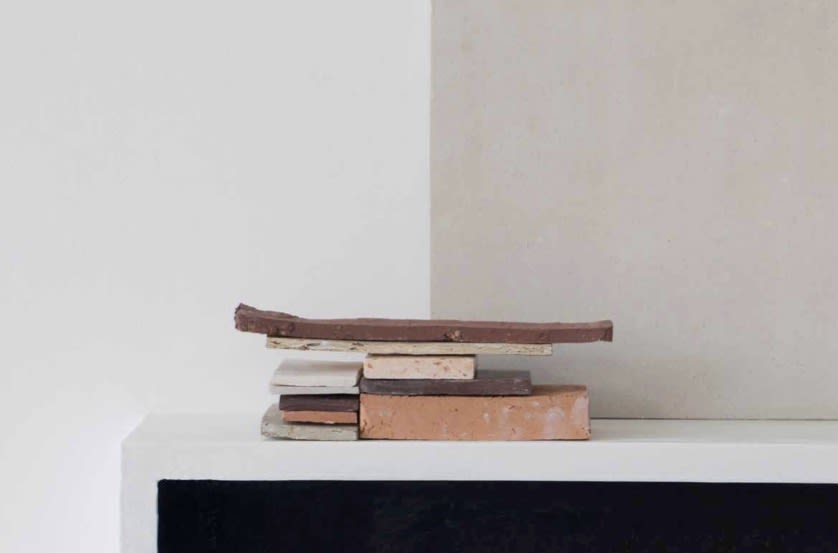
Successful AER resident, Carly Breame, shares her letter of motivation for the Mahler and LeWitt residency

- Written byPost-Grad Community
- Published date 11 May 2022

Carly Breame, MA Material Futures student from Central Saint Martins has been selected for the AER residency at Mahler and LeWitt, an established residency programme based in Spoleto, Italy
Set up by Professor Lucy Orta UAL Chair of Art for the Environment - Centre for Sustainable Fashion in 2015, The Art for the Environment International Artist Residency Programme (AER) provides UAL graduates with the exceptional opportunity to apply for short residencies at one of our internationally renowned host institutions, to explore concerns that define the 21st century – biodiversity, environmental sustainability, social economy, and human rights.
Read Carly's successful proposal
Please accept this letter as an expression of interest for the opportunity to participate in the MATERIA programme at Mahler & LeWitt Studios residencies. My role as material researcher and designer is embedded in a curiosity for material origin, culture and sustainable development. I would revel in the opportunity to contribute towards the programme and discuss how we might reconsider our relationship to the environment by changing the materials we use and our attitudes to production and consumption.
The motivation of this study is to investigate the regional material culture of spoleto and observe how the production and consumption behaviours of terra d'ombra have evolved. Originating from the region, the umber pigment is said to be one of the first colours to be used by man, and has been identified in Palaeolithic cave paintings. In the15th century the natural earth pigment made its way into the Baroque period and was an important shade in the palettes of Caravaggio, Rembrandt and Vermeer. More recently the natural earth pigment is less common but denotes a wholesome, earthly shade speaking of simplicity. Although commonly used in painting, the umber pigment is rich in iron and manganese oxides in the clay and lends itself for use in ceramics. The ambition of this study is therefore to explore how the pigment can discuss the region's culture, cuisine and ceramics - three aspects I believe signify a region and originate from the earth.

As a material researcher, from a small textile town in the North of England, I appreciate the heritage of regions and how time evolves the production and consumption of materials. Through my research I aim to develop ethical supply chains in materials, building traceability and transparency to aid knowledge of production whilst engaging in how to reduce the environmental footprint. As a designer, I am driven by the notion of functional objects that revolve around the dining table. The act of dining, I believe is the heart of any community, and my personal biggest joy in life. The dining table can serve as a meeting point. A space for collectiveness, for restoring and rejoicing. The dining table for this project will be the centre piece that unites the work and its uses.

Currently, in the last year of my Masters at Central Saint Martins on the Material Futures programme, I am exploring how restaurants can develop circular systems for dining. In collaboration with Angelas of Margate, I am developing materials using restaurant and local resources to develop materials that can be reused back into new resources. This includes fish bone china, ash based tabletops and biohydrogen energy from potato peelings. The materials demonstrate a closed loop system that reduces the use of external resources and creates a material culture specific to the restaurant. I believe by addressing production and consumption behaviours at this level is where the biggest change can be had. Through this programme I wish to continue this design theory and ask, how can Spoleto represent a regional material culture through the dining table? And how has production and consumption of umber impacted the experience of dining?
Alongside the Masters, I work as an independent ceramist and teacher. Engaging with adults and children on ideas comes naturally and I feel deeply satisfied from sharing knowledge. Furthermore, I recently worked for Textile Exchange researching environmental impacts of fibres for their data matrix. Textile Exchange climite+ mission aims to tackle the reduction of carbon emissions whilst regenerating and restoring ecosystems. I strongly believe in the work that Textile Exchange is achieving, the company demonstrates a collective view for the future, providing a harness and benchmark for all future sustainable developments.

Accompanying the material research, I thrive on collating data, specifically within the realms of carbon emission data. I am currently leading the carbon team on the Material Futures course to gather the collective carbon footprint and begin to offset it with future projects, with a long term goal of becoming the first carbon neutral course. I believe my passion for data and statistics comes from my prior career in business and IT, working on large scale migration projects and redesigning the charging structures for banking. These strategic, planning and project management stills position me well to be able to carry out this programme.
As a strong believer in driving positive change, a systems thinker and deep understanding of environmental and material challenges, I would be honoured to support the Materia programme this summer.
I look forward to hearing from you
Regards
Carl
Related links
UAL Post-Grad Community
Established in 2013, Post-Grad Community is an inclusive platform for all UAL postgraduate students to share work, find opportunities and connect with other creatives within the UAL and beyond. Find out more